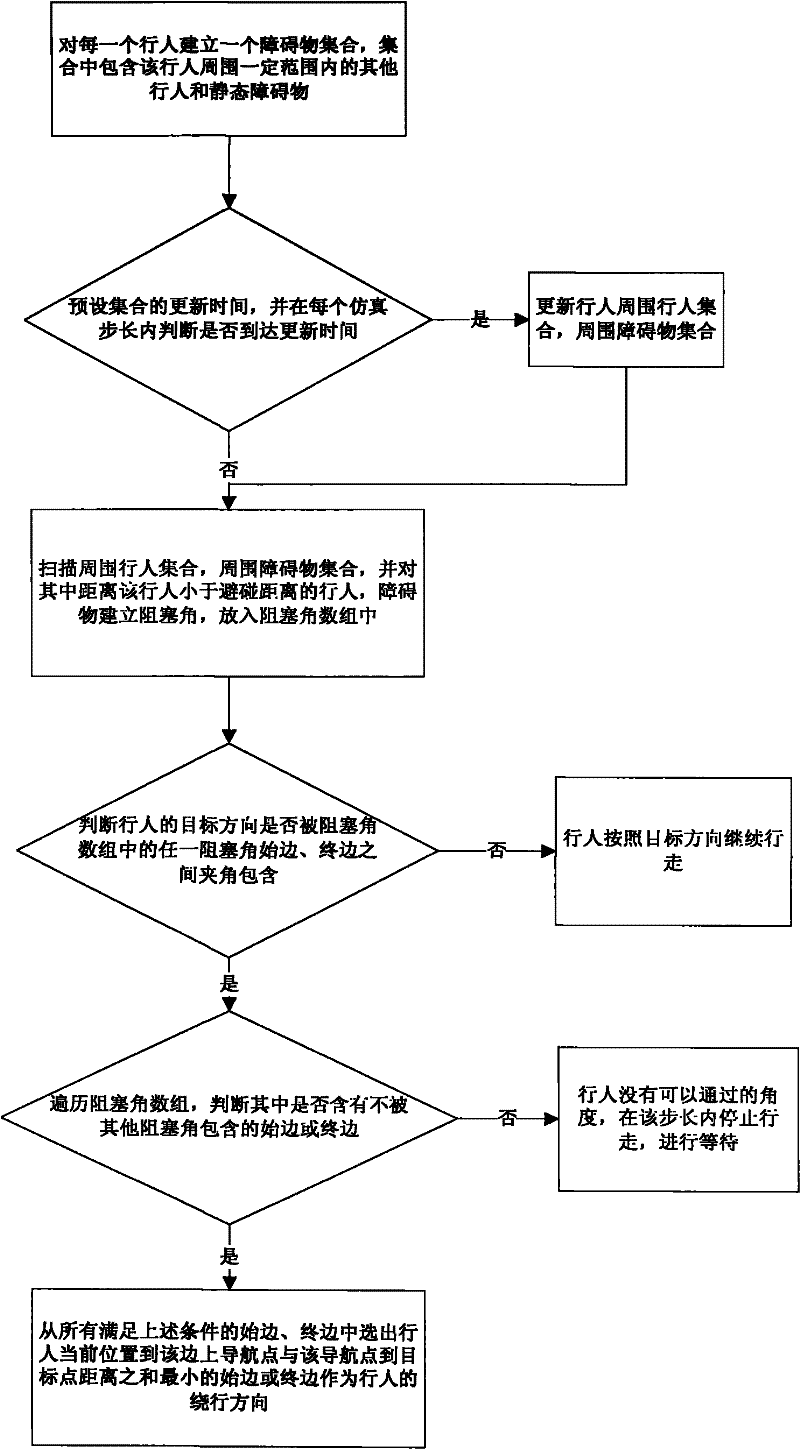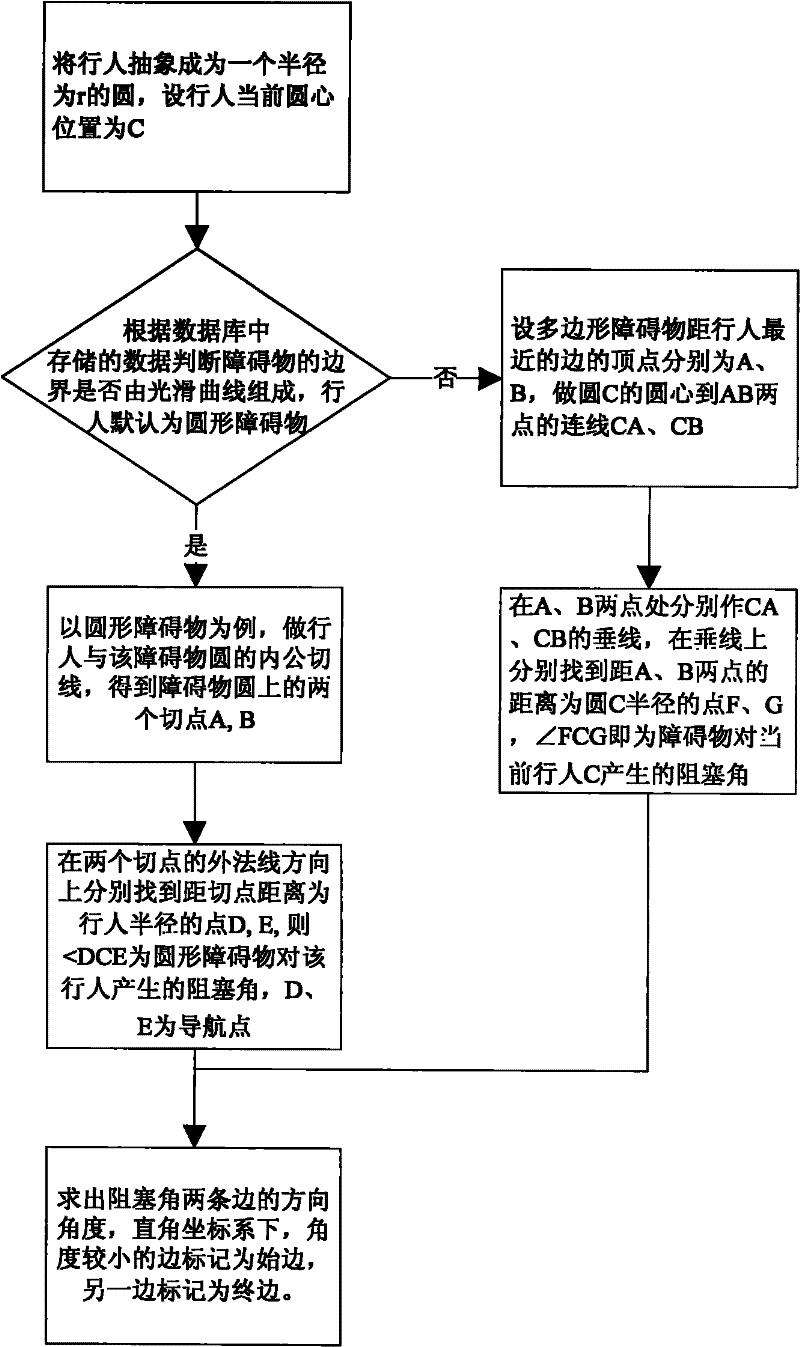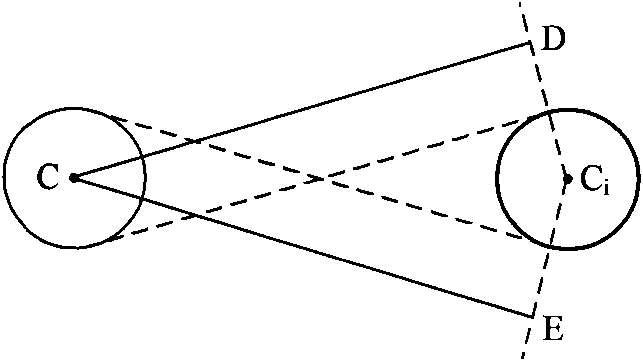Method for avoiding obstacles based on blocking corners in pedestrian simulation
A technology for obstacles and pedestrians, which is applied in the field of obstacle collision avoidance in pedestrian simulation based on blocking angle, can solve the problems of repulsion parameter calibration, improve pedestrian simulation, etc., and achieve the effect of simplifying modeling work and fewer algorithm parameters
- Summary
- Abstract
- Description
- Claims
- Application Information
AI Technical Summary
Problems solved by technology
Method used
Image
Examples
Embodiment
[0039] Collision avoidance for multiple pedestrians in the same direction
[0040] Such as Figure 7 As shown, C is the current pedestrian, D j is the target point, C 1 、C 2 Pedestrian C is the pedestrian who hinders him from reaching the target point, by making circle C and circle C 1 、C 2 The internal common tangent of the tangent point A 1 、A 2 、A 3 、A 4 , in the direction of the outer normal of each tangent point, take a point T whose distance from the tangent point is the radius of the circle C 1 , T 2 , T 3 , T 4 ,∠T 1 CT 2 and ∠T 3 CT 4 is the blocking angle. Both the terminal side and the starting side of the blocking angle correspond to the direction angle and the navigation point, judge whether the side of the blocking angle is included by other blocking angles through the direction angle, and record the navigation point of the starting side or the terminal side that is not included in one In the set T, calculate the sum of the distance from the pede...
PUM
 Login to View More
Login to View More Abstract
Description
Claims
Application Information
 Login to View More
Login to View More - R&D
- Intellectual Property
- Life Sciences
- Materials
- Tech Scout
- Unparalleled Data Quality
- Higher Quality Content
- 60% Fewer Hallucinations
Browse by: Latest US Patents, China's latest patents, Technical Efficacy Thesaurus, Application Domain, Technology Topic, Popular Technical Reports.
© 2025 PatSnap. All rights reserved.Legal|Privacy policy|Modern Slavery Act Transparency Statement|Sitemap|About US| Contact US: help@patsnap.com



